Haitian Pikliz is a condiment served alongside most food in Haitian cuisine. It is made by pickling cabbage, carrots, and spicy peppers together.
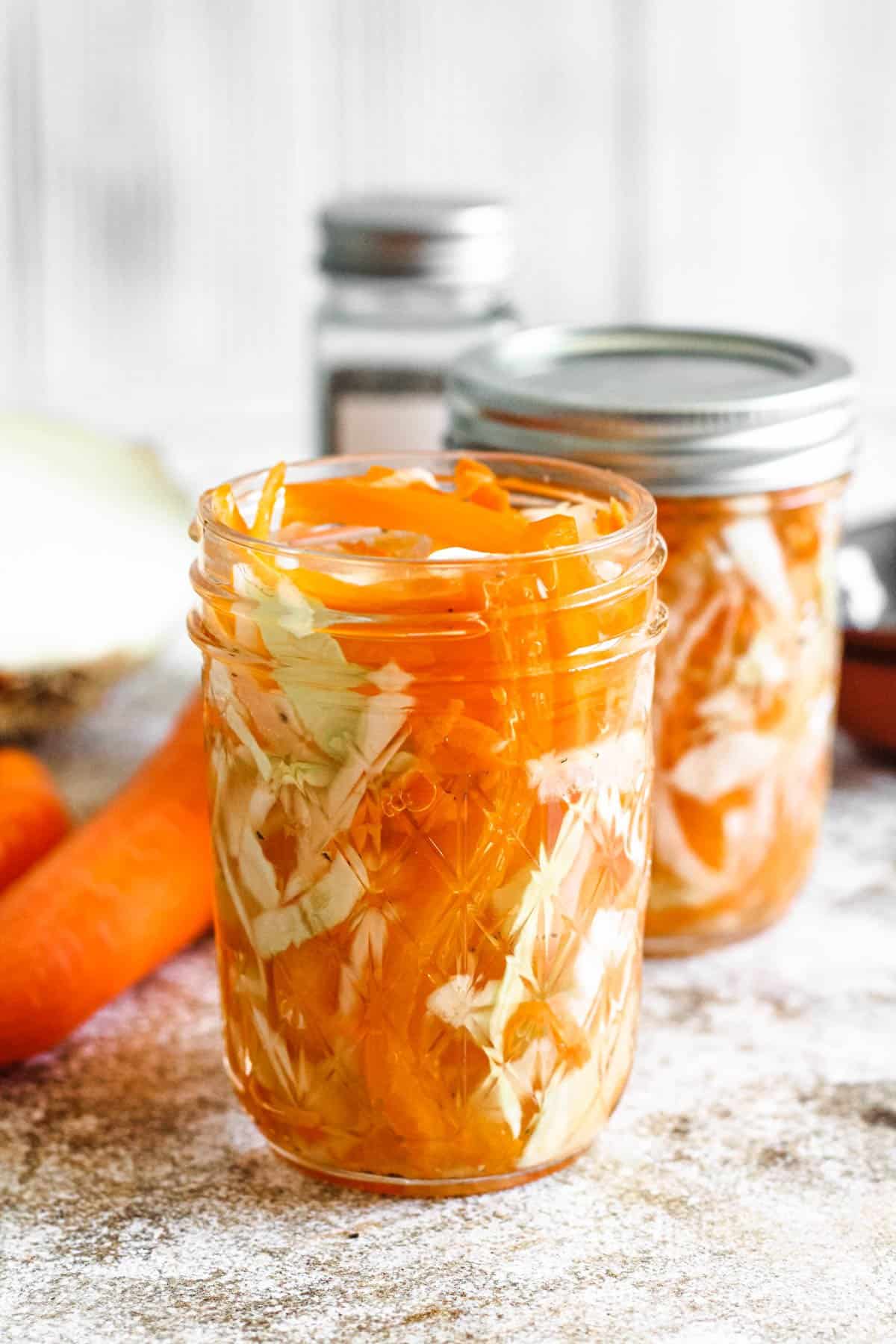
Recipe Origins
Pikliz is an incredibly popular recipe is Haitian cuisine. It is made by pickling peppers, cabbage, carrots, and onions together with spicy peppers, and is served as a side to almost every meal in Haitian cuisine.
While Pikliz is a popular side to Haitian Griot, or any other meat, poultry, or fish, it can be served with almost anything. Some even eat it by itself, with a fork!
This recipe is likely very common in Haiti because most Haitians lack refrigeration. The vinegar preserves the vegetables, allowing them to last a long longer and add a delicious taste to any meal!
Every Pikliz recipe is different depending on where in the country it’s coming from as well as special familial touches. If this Pikliz Recipe is different from yours, leave a comment letting me know what else you add!
Thank you to Miata from Love of Yum for checking over my recipe and making sure it represented Haiti well.
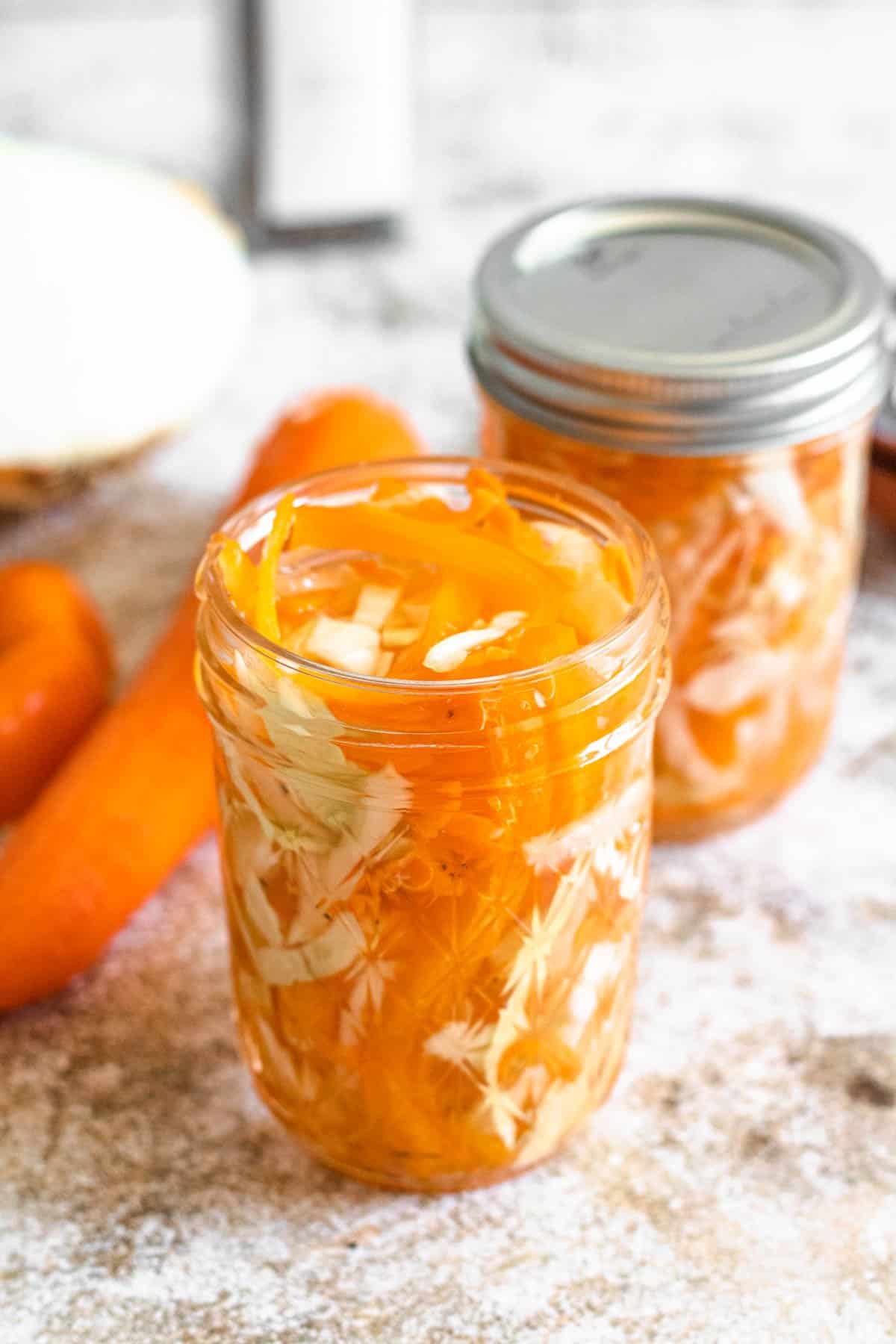
Why Make this Recipe
- “Travel” to Haiti: If you’ve ever wanted to get a “taste” of what life in Haiti is like, look no further! This Haitian pikliz will bring the flavors of Haiti to your kitchen table.
- Goes With Everything: Adding a little pop of flavor to your meals has never been so easy. Prep a jar of Pikliz and serve it whenever your meals need some oomf.
- 10-15 Minutes: This recipe takes only as long to put together as it takes to slice up your veggies! It comes together simply and easily.
What Do I Need to Make this Recipe?
Here is a visual overview of the ingredients in the recipe. Scroll down to the recipe at the bottom for quantities.
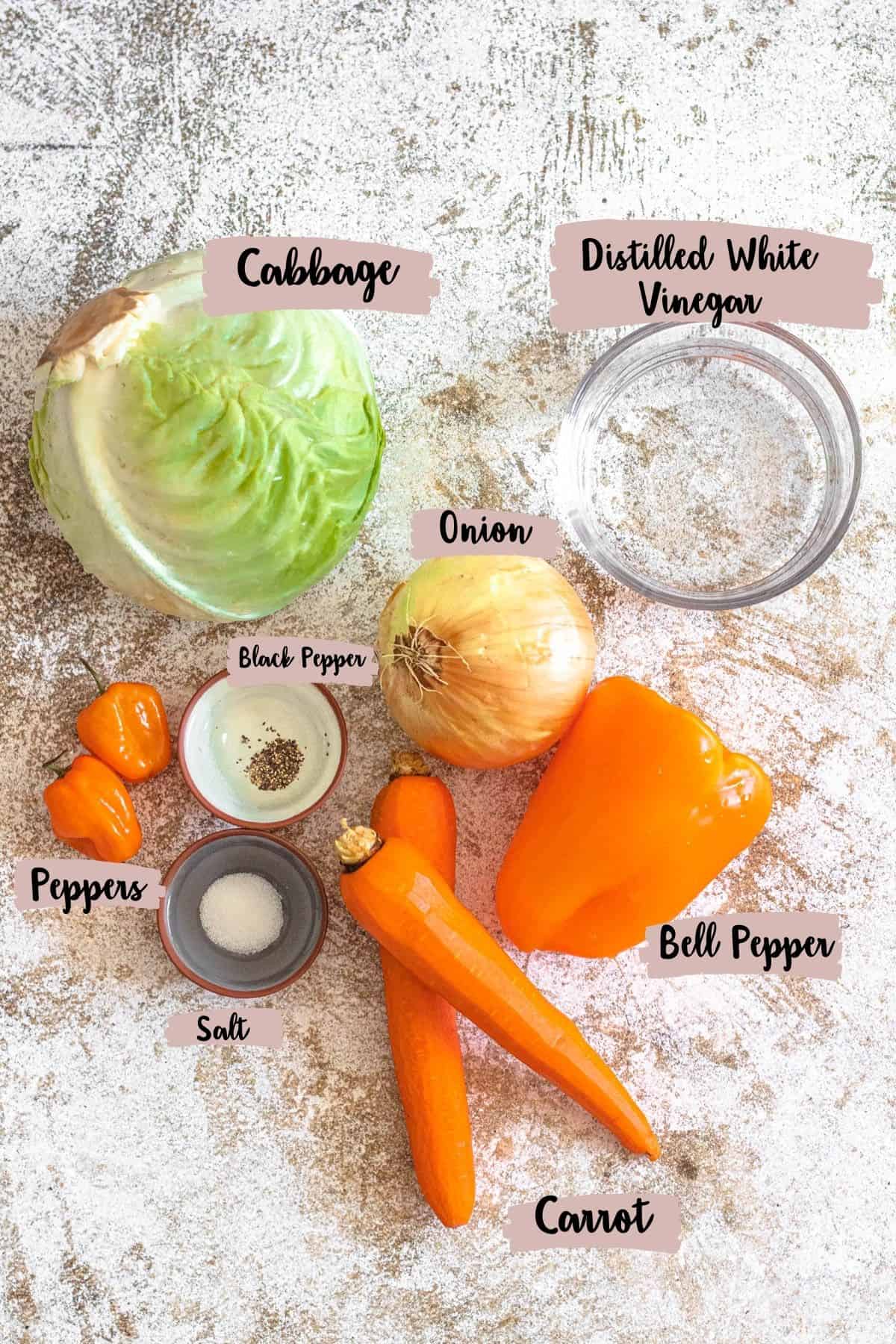
- Cabbage: Buy a head of cabbage and use a knife to slice it. You can also buy pre-shredded cabbage if you prefer.
- Carrots: I recommend buying a full-sized carrot, and using a cheese grater to shred it into thin pieces. I do not recommend buying pre-cut matchstick carrots, as it will change the texture.
- Peppers: Scotch bonnet peppers are more popular in this recipe. They can be hard to find in American grocery stores, so you can also substitute habanero peppers.You can also substitute Scotch Bonnet Pepper Sauce.
How to Make this Recipe
[adthrive-in-post-video-player video-id=”IzjlmMOD” upload-date=”2021-12-09T19:11:20.000Z” name=”Pikliz Recipe” description=”Haitian Pikliz is a condiment served alongside most food in Haitian cuisine. It is made by pickling cabbage, carrots, and spicy peppers together. ” player-type=”static”]
Step 1: Prep the Veggies
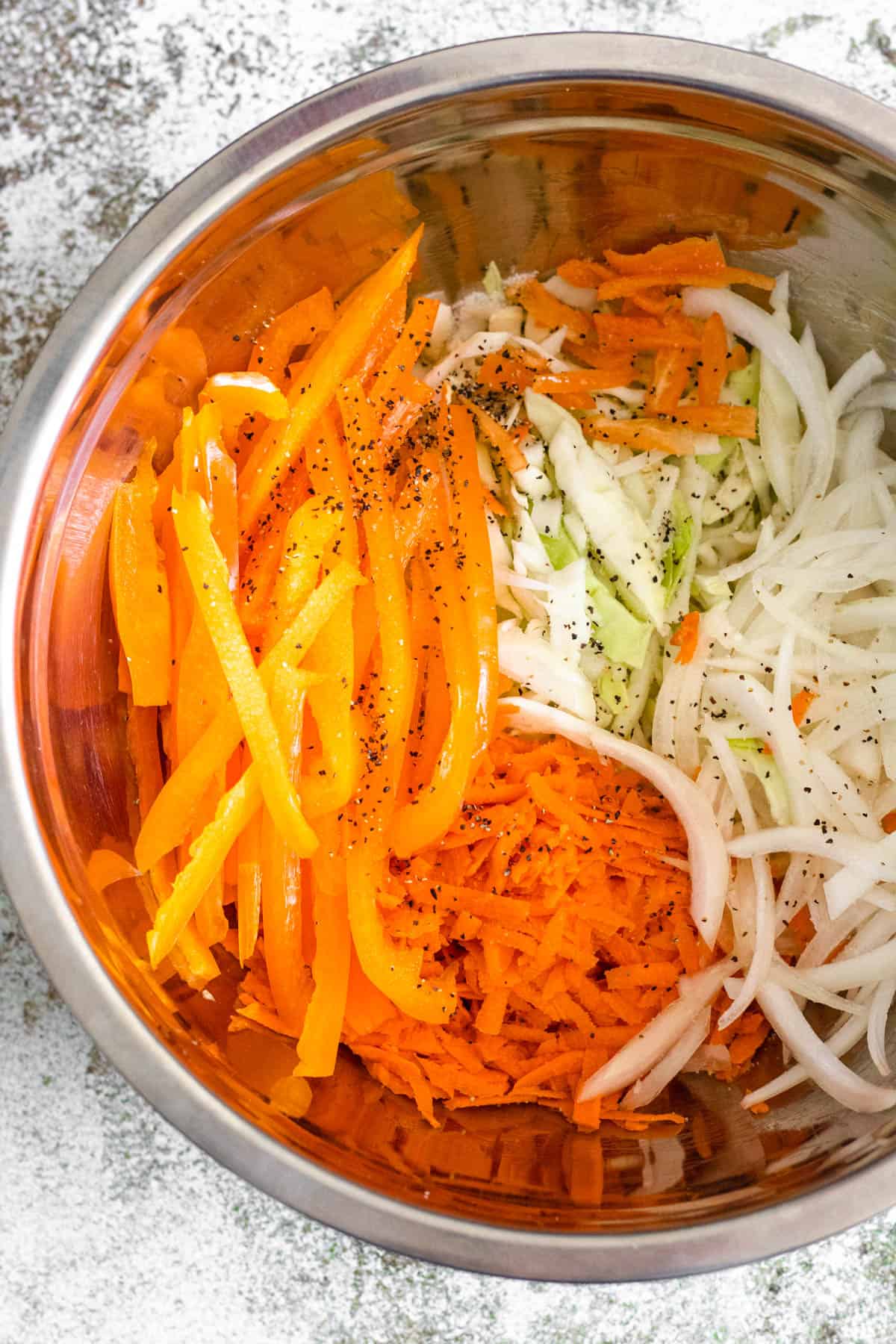
In a large bowl, combine the cabbage, carrots, yellow onion, bell pepper, habanero peppers, salt, and pepper. Wear gloves and use your hands to mix all of the ingredients together.
Step 2: Pickle the Pikliz
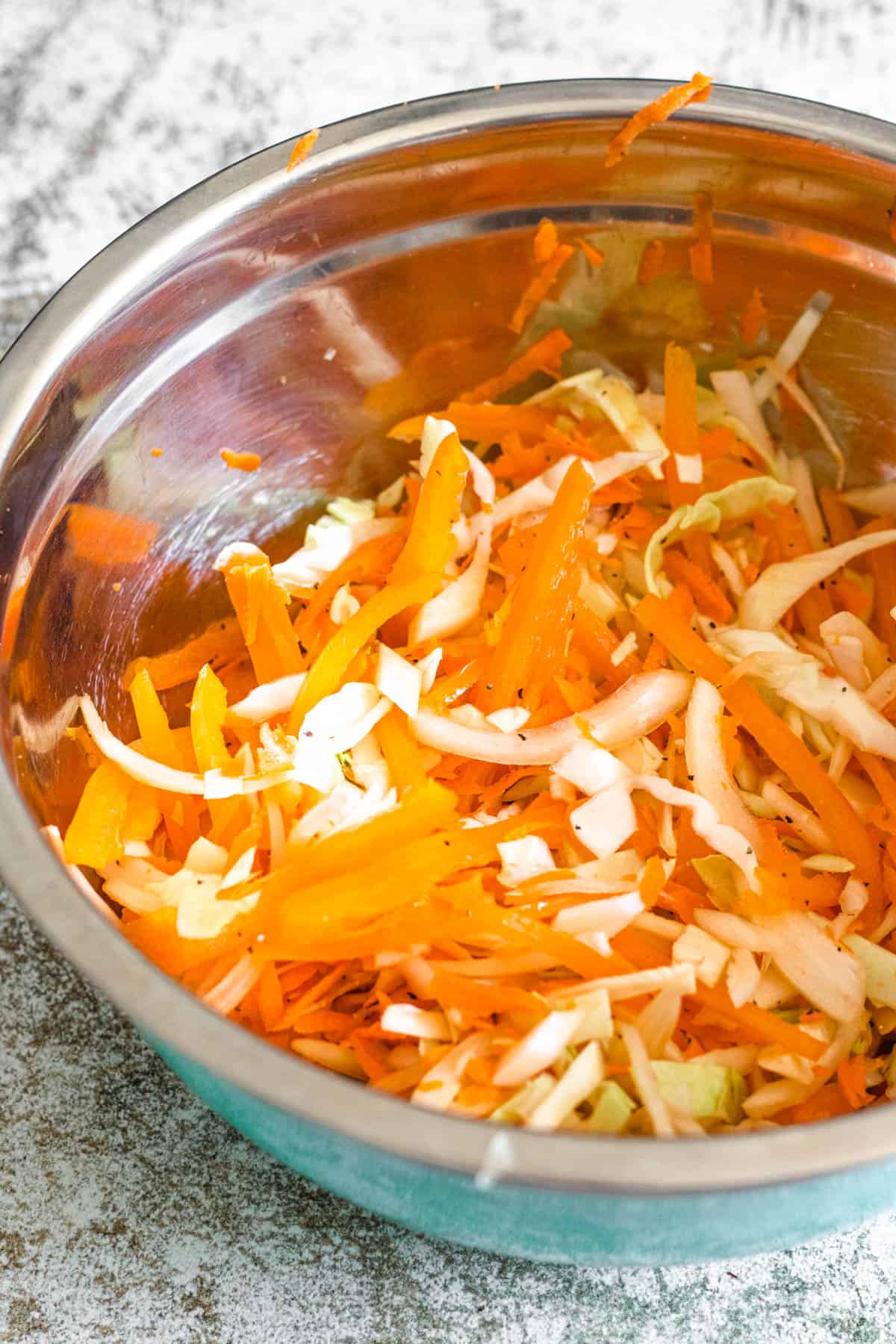
Pack the mixture into mason jars (2 large or 4 small mason jars). Pour white vinegar into each jar over the vegetables to fill the jar.
Secure the lid. Store in the fridge for at least 2-3 days before eating.
Expert Tips
- Allow your Pikliz Recipe to sit in the fridge or on the counter for at least 2-3 days before enjoying it (for best results). You can eat your Pikliz right away, but allowing the vegetables to soak in the vinegar for a while will produce better taste.
- Use gloves when cutting your peppers and avoid touching your face after cooking! You don’t want to burn your skin or your eyes.
- Remove the seeds from the habanero peppers if you want a less spicy pikliz.
- Some recipes call for adding lime juice. You can add a few tablespoons of lime juice if you prefer!
Recipe FAQs
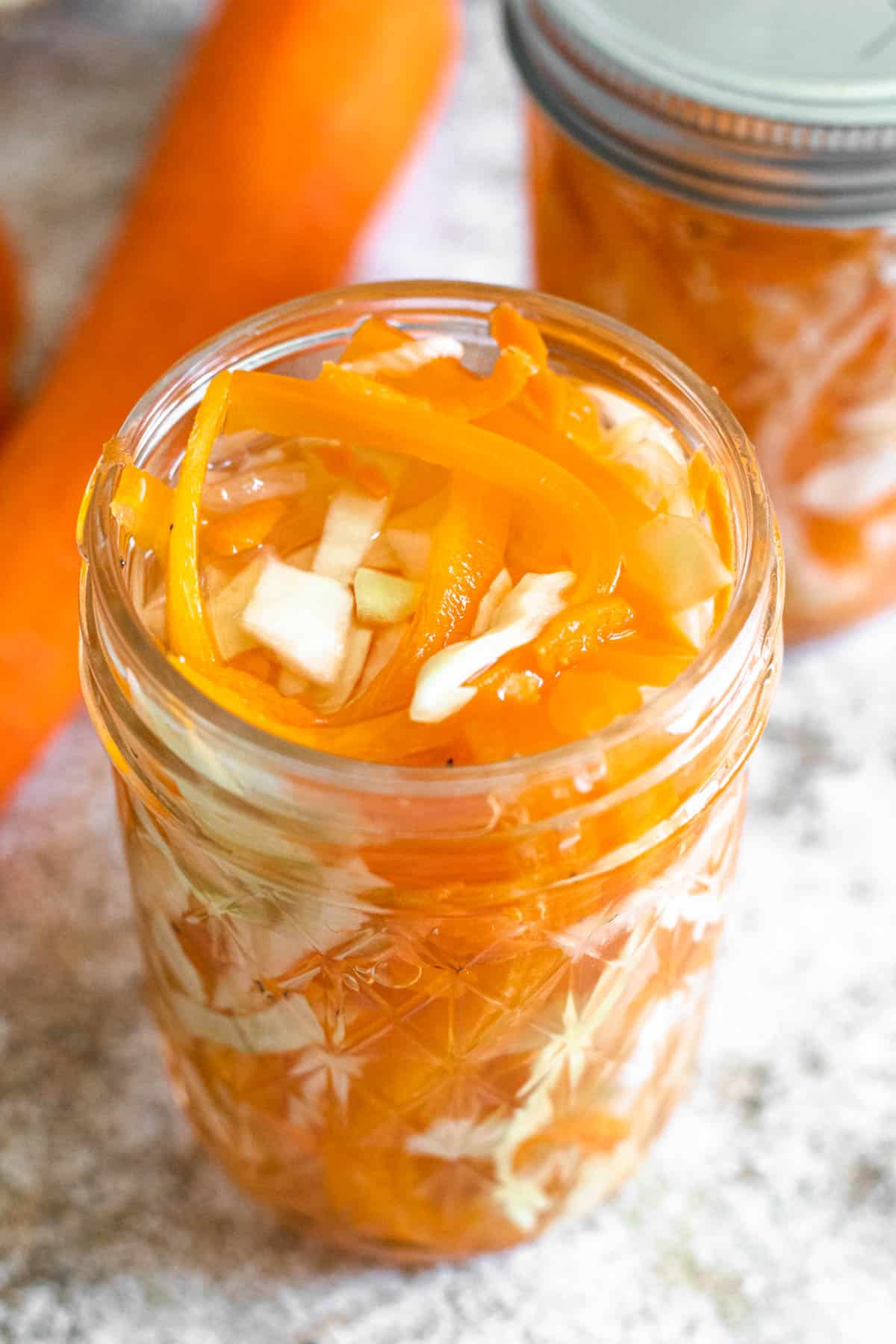
Pikliz doesn’t need to be refrigerated, but it will last quite a while in the fridge (up to 2-3 months).
The longer the pikliz is in the fridge, the less spicy it will become.
Yes, Pikliz is very spicy! If you would like to tone down the spiciness of this dish, you can adjust the amount of hot pepper added.
For zero spiciness, omit the pepper completely (although the spiciness is a defining factor of Pikliz).
You pronounce this dish as “pick-leez”.
Did you enjoy this Pikliz Recipe? If so, make sure to check out these other recipes I picked out just for you:
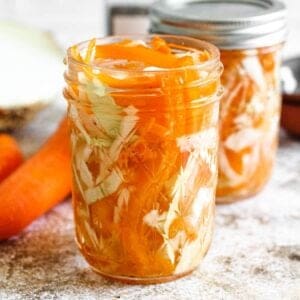
Pikliz Recipe
Equipment
- Mason Jars
- Mixing Bowl(s)
- Plastic Gloves
Ingredients
- 2 cups Cabbage, shredded
- 1 large carrot, peeled and shredded
- ½ medium yellow onion, thinly sliced
- 1 bell pepper (usually red, but I used orange), thinly sliced
- 2 Habanero Peppers, sliced. You can also use scotch bonnet if you can find them
- ½ tsp Salt
- ¼ tsp Fresh Ground Black Pepper to Taste (Use code FF20 for 20% off)
- 2 cups Distilled White Vinegar, or enough to cover the vegetables in the jar
Instructions
- In a large bowl, combine the cabbage, carrots, yellow onion, bell pepper, habanero peppers, salt, and pepper. Wear gloves and use your hands to mix all of the ingredients together.
- Pack the mixture into mason jars (2 large or 4 small mason jars). Pour white vinegar into each jar over the vegetables to fill the jar. Secure the lid. Store in the fridge for at least 3 days before eating.
Notes
- Cabbage: Buy a head of cabbage and use a knife to slice it. You can also buy pre-shredded cabbage if you prefer.
- Carrots: I recommend buying a full-sized carrot, and using a cheese grater to shred it into thin pieces. I do not recommend buying pre-cut matchstick carrots, as it will change the texture.
- Peppers: Scotch bonnet peppers are more popular in this recipe. They can be hard to find in American grocery stores, so you can also substitute habanero peppers.You can also substitute Scotch Bonnet Pepper Sauce.
- Allow your Pikliz Recipe to sit in the fridge or on the counter for at least 2-3 days before enjoying it (for best results). You can eat your Pikliz right away, but allowing the vegetables to soak in the vinegar for a while will produce better taste.
- Use gloves when cutting your peppers and avoid touching your face after cooking! You don’t want to burn your skin or your eyes.
- Remove the seeds from the habanero peppers if you want a less spicy pikliz.
- Some recipes call for adding lime juice. You can add a few tablespoons of lime juice if you prefer!


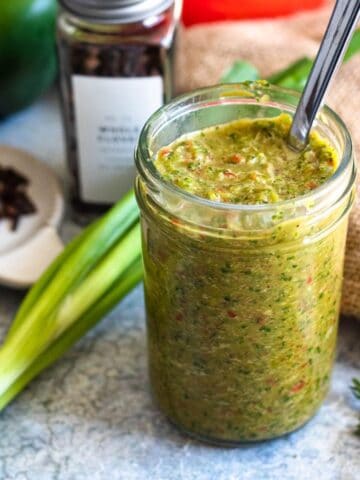
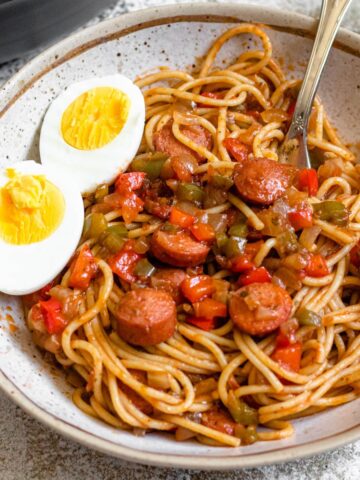
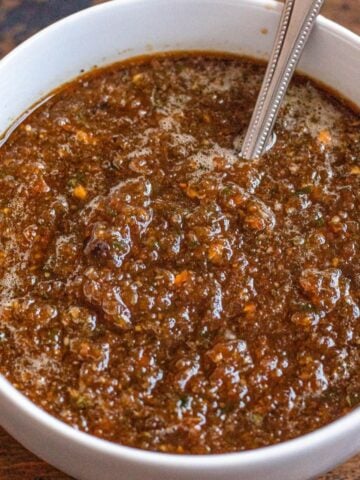
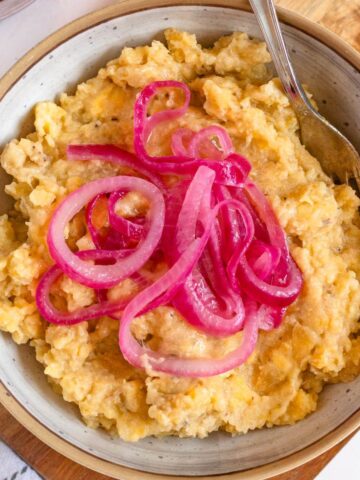




Mel says
I was wondering if this could be water processed (to seal and maintain freshness like when making pickles?).
Alexandria Drzazgowski says
Hi mel, I actually have never canned anything before, so I am not sure. I’m sure you can, I just don’t know the correct steps to tell you how to do it!
Seth says
Do you chop the habanero peppers or put them in whole?
The Foreign Fork says
Good question Seth! I sliced mine 🙂